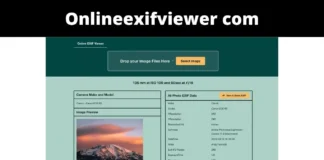Medicare is only one of many new issues retirees must learn to navigate as they enter a new phase of life. Knowing when to enroll in Medicare and which parts to take might be challenging.
There’s Original Medicare, Supplemental Medicare, Medicare Advantage, and a slew of other options.
Here are the fundamentals of Medicare, the health insurance program for Americans over 65.
Does Medicare Fall Under State or Federal Jurisdiction?
The federal government manages Medicare for 65-plus and handicapped Americans. The Medicare benefits are quite extensive. It covers medical visits, prescriptions, and hospital stays.
Medicare’s universal coverage is uniform across states. Medicare’s nationwide network of physicians, hospitals and medical institutions covers the whole country.
The federal government processes insurance claims for Original Medicare. The best Medicare plans cover eligible Americans’ preventive care, diagnosis, and treatment.
However, Medicare Advantage plans in each state use local providers based on county or zip code. If you live in California, you must type in your zip code to get free quotations in your region. The same goes for other states. People got the option of 526 Medicare plans in Florida in 2021. This year it has changed and increased to 583 plans. When you try the region zip code to find out the free quotations, it will help you choose the best plan at the best price.
What Does Medicare Cover, Specifically?
Medicare’s many subparts help pay for a wide variety of medical procedures. Before you learn how to apply for Medicare, you need to know the basics about them.
- Medicare Part A (Hospital Insurance)-
Part A covers hospitals, nursing homes, hospice, and sometimes home care.
- Medicare Part B (Medical Insurance)-
Part B covers physician services, outpatient care, medical supplies, and preventive care.
- Medicare Parts A and B recipients may be interested in Medicare Advantage Plans. Private insurers with Medicare contracts must provide Medicare Advantage plans. The majority of best Medicare advantage plans cover prescription drugs (Part D).
- Medicare Part D (prescription drug coverage)-
Helps cover the cost of prescription drugs. Many vaccinations and other injections are included.
The Medicare Coverage Is Not Free
- Medicare has many sub-parts. If you or your spouse have paid Medicare for 10 years, you may get free Part A hospital coverage. Those who don’t qualify for free Part A pay several hundred dollars a month.
Part A may be purchased if you don’t qualify for free coverage. You might be charged as much as $499 monthly beginning in 2022. Standard Medicare Part A premium is $499 if you have paid Medicare taxes for less than 30 quarters. Part A costs $274 if you have paid Medicare taxes for 30–39 quarters.
- Medicare Part B monthly premiums will climb to $170.10 in 2022 from $148.50 in 2018. The typical Medicare Part B premium is $134.60 per month. The standard Medicare Part B premium in 2022 would be $170.10. If your MAGI from the preceding year is over the IRS level, you owe the standard premium plus an IAMA (IRMAA). The IRMAA premium supplement is an additional fee.
- The average Part D basic premium for 2022 will be $33, up from $31.47 last year. Co-pays and deductibles add to your health insurance costs. Medicare drug coverage may make prescription drugs more affordable.
You must enroll in a Medicare-approved drug plan to get Medicare medication coverage. Options that supplement Original Medicare with medication coverage are also included.
Estimated Annual Premiums for Medicare Advantage Plans
| State | Monthly Premium | Number of Plans | Prescription Drug Deductible |
| Alabama | $65 | 82 | $257 |
| Arizona | $48 | 58 | $322 |
| California | $48 | 424 | $377 |
| Arkansas | $48 | 82 | $322 |
| Connecticut | $79 | 57 | $318 |
| Colorado | $49 | 34 | $343 |
| Delaware | $64 | 28 | $239 |
| Florida | $68 | 583 | $234 |
| Georgia | $49 | 157 | $272 |
| Hawaii | $58 | 33 | $309 |
| Indiana | $44 | 126 | $208 |
| Illinois | $71 | 166 | $393 |
| Idaho | $41 | 80 | $233 |
| Iowa | $50 | 61 | $324 |
| Kentucky | $45 | 98 | $209 |
| Kansas | $58 | 88 | $779 |
| Louisiana | $57 | 102 | $325 |
| Missouri | $43 | 126 | $316 |
| Minnesota | $94 | 101 | $354 |
| Mississippi | $49 | 61 | $360 |
| Montana | $80 | 27 | $369 |
| Nebraska | $49 | 36 | $241 |
| New Hampshire | $45 | 44 | $328 |
| New York | $72 | 280 | $297 |
| New Mexico | $40 | 69 | $248 |
| North Carolina | $50 | 4 | $224 |
| North Dakota | $117 | 23 | $448 |
| Ohio | $86 | 202 | $194 |
| Oregon | $64 | 132 | $237 |
| Oklahoma | $48 | 72 | $271 |
| Pennsylvania | $82 | 240 | $323 |
| Rhode Island | $102 | 33 | $256 |
| South Dakota | $105 | 25 | $431 |
| South Carolina | $39 | 96 | $231 |
| Tennessee | $59 | 112 | $330 |
| Texas | $74 | 289 | $273 |
| Utah | $52 | 54 | $183 |
| Virginia | $57 | 132 | $289 |
| Washington | $70 | 159 | $240 |
Key Information Regarding Medicare Enrollment
- Medicare Eligibility Requirements Vary by Individual
For some; eligibility begins at age 65. A person under 65 who has received SSDI or RRB disability payments for 24 months may be eligible for Medicare. Patients with amyotrophic lateral sclerosis (ALS) are immediately eligible for Medicare coverage.
People with ESRD may qualify for Medicare if they meet certain requirements. Knowing how to join the best Medicare advantage plans might assist you in educating current and former workers and their families.
- Additional Requirements for Enrolling in Medicare
Medicare enrolls certain individuals automatically, while others must voluntarily join.
If you fit into any of the following categories, you must enroll in Medicare:
- You reach 65 and haven’t started collecting Social Security yet.
- You have renal failure and need dialysis (ESRD). Insurance rules are different when it comes to end-stage renal disease. Contact the Medicare advisors if you have questions about Social Security eligibility or expiry.
Automatic enrollment applies to you if:
- You are currently receiving benefits from either Social Security or the RRB.
- You have been receiving disability payments for 24 months and are under the age of 65.
You must join Medicare and choose the best Medicare advantage plans if you are not automatically enrolled. Rates may rise if people wait too long to enroll in the best Medicare plans.
- When Is It Appropriate to Enroll in Medicare?
- Time of Open Enrollment
If you miss your Initial Enrollment Period, you may enroll between January 1 and March 31. Remember that Florida Medicare Advantage plans won’t begin until July of that year, so plan accordingly.
- Advanced Enrollment
If you are turning 65, you have a window of opportunity to enroll known as the Initial Enrollment Period. No penalty for enrolling in Medicare beyond 65 if you have employer-provided health insurance (or your spouse does).
Suppose you don’t have employer-provided health insurance and don’t enroll in Medicare. In that case, your premiums will go up when you finally do join up.
- Period of Special Enrollment
You may be eligible for a Special Enrollment Period if you delayed enrolling in your employer’s health plan over age 65.
Medicare enrollment is free while employed and for eight months after termination. To get the best Medicare advantage plans, you need to remember these timelines properly.
- Annual Election Window
Medicare open enrollment is from Oct. 15 through Dec. 7. Annual Enrollment Period coverage changes don’t take effect until January 1. If you are content with your Medicare coverage, you are not required to transfer. If no modifications are made by January 1, your plan will be automatically renewed.
- The Time to Sign Up for Medicare Advantage
Medicare Advantage Open Enrollment is January 1 to March 31. You may switch to Original Medicare or choose the best advantage Medicare plan during this period.
Commercial insurers only offer Medicare Advantage programs. Your new coverage begins at the beginning of the month after you make the change.
- How do Different States Handle Medicare Part D Prescription Drug Plans?
Medicare Part D prescription medication plans are supplemental commercial insurance. Prescription medication coverage is included in the best Medicare advantage plans.
Medicare plan rates and availability vary by state. Although all states must provide Medicare Part D enrollment over the same time (October 15-December 7) as Original Medicare.
Medicare Part D coverage options might change from one state to the next. According to the Kaiser Family Foundation, each state will provide 19 to 27 insurance choices in 2022.
- Receiving Medicare in Another State
Wherever you go in the United States, Original Medicare will take care of you. Because it is a government program, Original Medicare covers the whole nation. However, even if you go out of state for medical care, you must see a doctor that accepts Medicare patients.
Depending on your Medicare Advantage plan, you may or may not be able to receive Medicare benefits in other states. Some insurance plans limit treatment outside a network of hospitals and doctors. Consult a Medicare adviser after learning how to apply for Medicare to get this information.
- The Migration of Medicare to Another State
If you relocate to a new area, you will need to enroll in the best advantage Medicare plan that serves your new location. CNBC says you have two months to modify your plan after entering your new state.
If you have Original Medicare and you relocate, all you have to do is let Medicare know where you are now.
Conclusion
Some Medicare Advantage plans may be used out of state. However, most are limited to a set geographic region or network provider. Moving to a new state or city means choosing a Medicare Advantage plan that serves your new location.

















